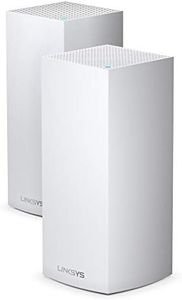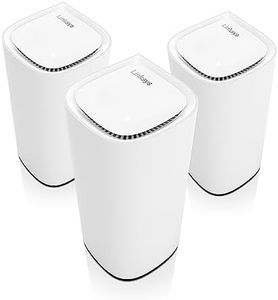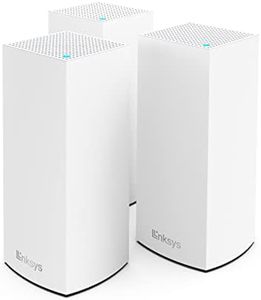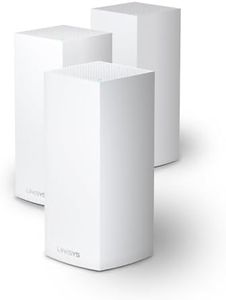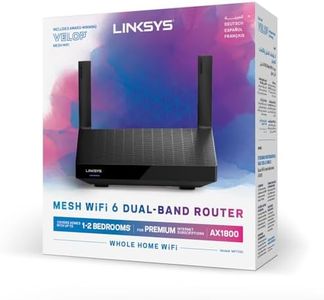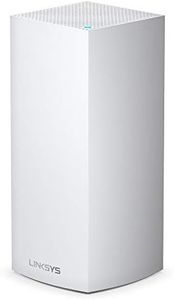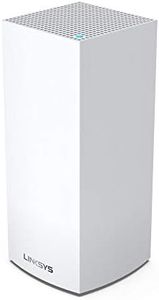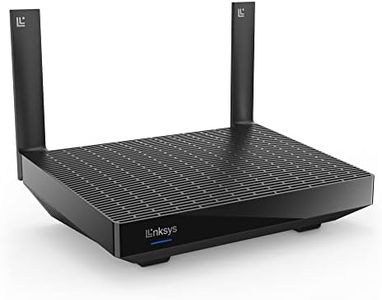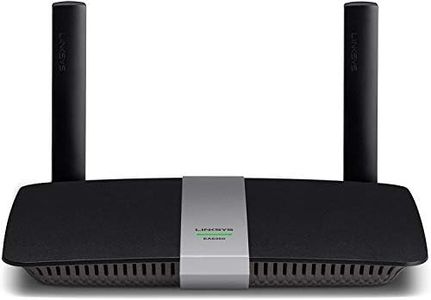We Use CookiesWe use cookies to enhance the security, performance,
functionality and for analytical and promotional activities. By continuing to browse this site you
are agreeing to our privacy policy
10 Best Linksys Routers
From leading brands and best sellers available on the web.Buying Guide for the Best Linksys Routers
When choosing a Linksys router, or any router, it's important to look beyond the brand and focus on features that match your home or office needs. Think about the number of devices you'll connect, the size of the space you want to cover, and the type of activities you do most often, such as streaming, gaming, or basic browsing. Understanding these things will help you filter out unnecessary features and make a confident purchase decision.Wi-Fi Standard (e.g., Wi-Fi 5, Wi-Fi 6)The Wi-Fi standard refers to the generation of wireless technology the router uses. This affects both speed and how many devices the router can handle efficiently. Wi-Fi 5 (also known as 802.11ac) is great for most homes with moderate needs, supporting fast connections for activities like streaming and gaming. Wi-Fi 6 (802.11ax) is the latest, offering better speed, range, and support for more devices. If you have a lot of smart devices or want future-proofing, Wi-Fi 6 is ideal. For smaller households or basic usage, Wi-Fi 5 routers still do the job well.
Frequency Bands (Single, Dual, or Tri-Band)Routers work on different frequency bands, usually 2.4GHz and 5GHz. Single-band routers only use one band (2.4GHz), which can be crowded but has more range. Dual-band routers use both 2.4GHz and 5GHz, letting you balance speed and range. Tri-band routers add an extra 5GHz band, which helps reduce congestion if you have many connections or heavy users. Choose single-band if your needs are basic, dual-band for average homes, and tri-band for busy households needing top performance.
Coverage Area (Range)Coverage area is how much space your router’s signal can effectively reach. Routers are rated for different home sizes: small apartments, medium houses, or large homes with multiple floors. Small homes or apartments can work with standard models, but larger spaces may need routers with high coverage ratings or mesh systems to avoid dead zones. Match the range to your home size and consider how many walls or obstacles the signal must pass through.
Maximum Speed RatingThis is usually shown in Mbps or Gbps and refers to the top possible speed the router can deliver under perfect conditions. While a higher speed sounds better, your internet plan and device support matter more. Pick a router with speed that matches (or is a bit above) your internet subscription, so you’re not bottlenecked by your own equipment.
Number of Ethernet PortsEthernet ports let you connect devices directly with a cable, which usually gives a more stable and faster connection than Wi-Fi. Some routers have just one or two, others have four or more. If you have devices like gaming consoles, PCs, or smart TVs that need wired connections, look for a router with enough ports. If you’ll mostly use Wi-Fi, this matters less.
Parental Controls and Security FeaturesParental controls allow you to manage what kinds of content can be accessed and when, which is helpful if you have kids. Security features protect your network from threats and unauthorized access. More advanced options offer extras like automatic updates and guest network access. If safety and control are key for your family or business, make sure these features are robust and easy to use.
Mesh CompatibilitySome routers can work with mesh systems, where you add extra units to extend coverage seamlessly across your home. This is useful for large, multi-story homes or places where the signal drops in certain areas. Choose mesh compatibility if you anticipate needing to grow your network beyond a single router.
